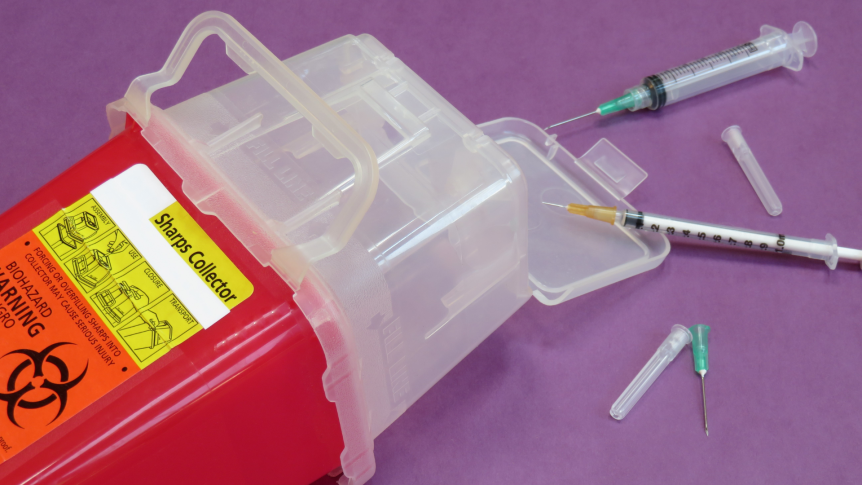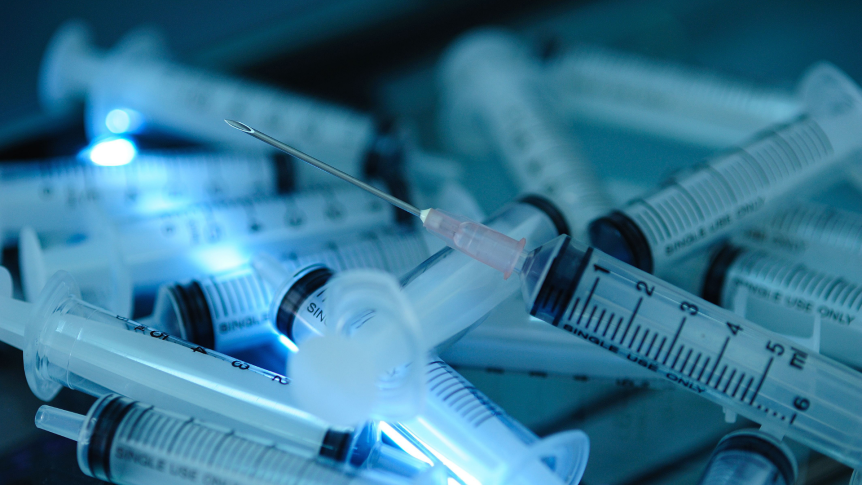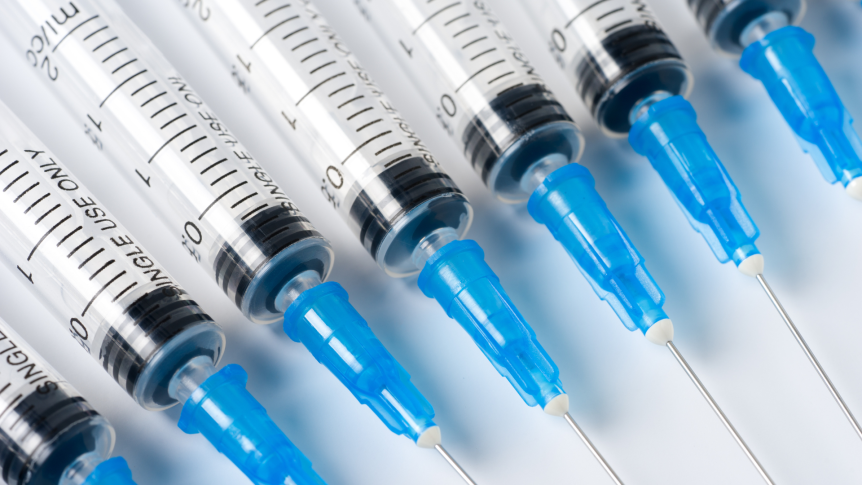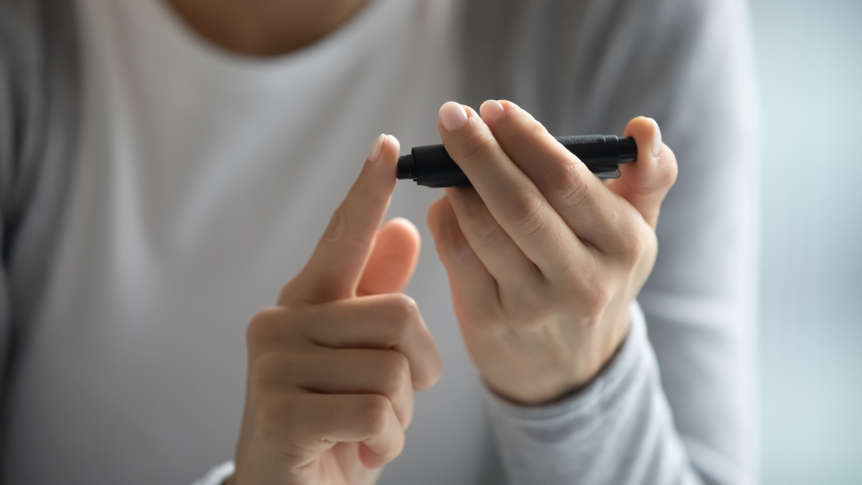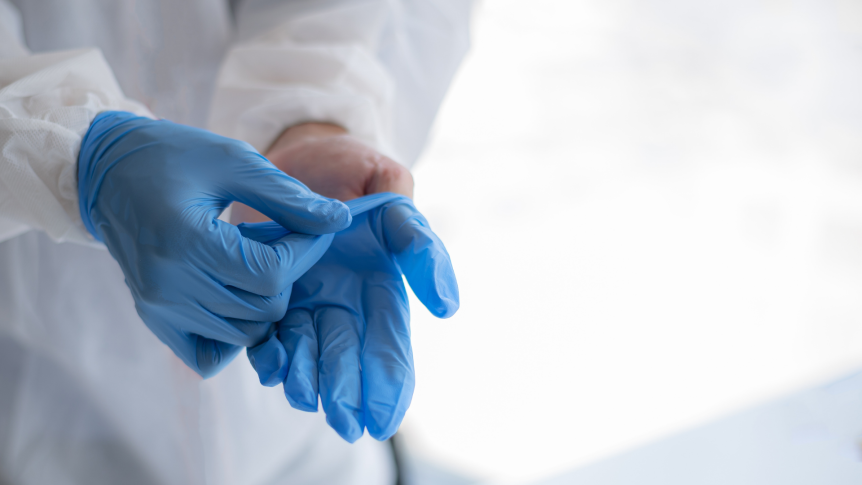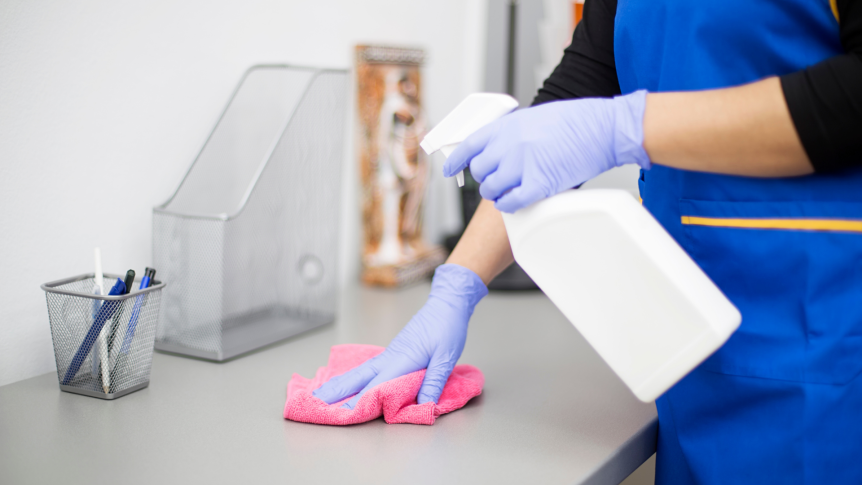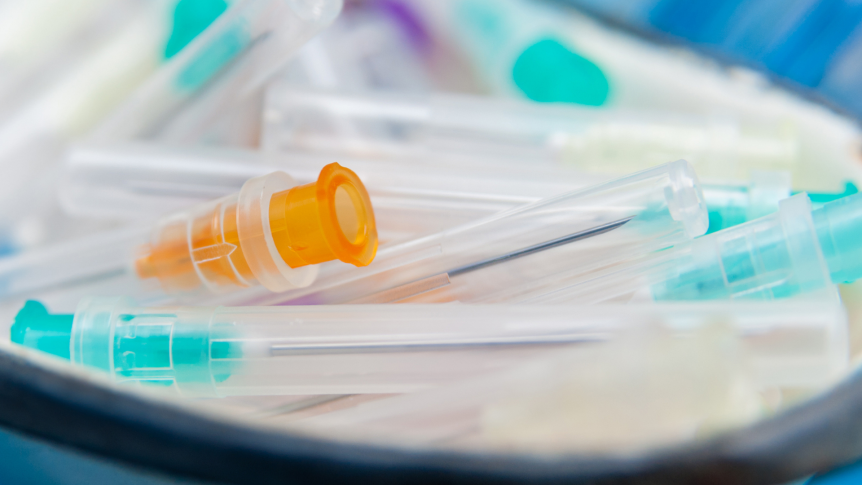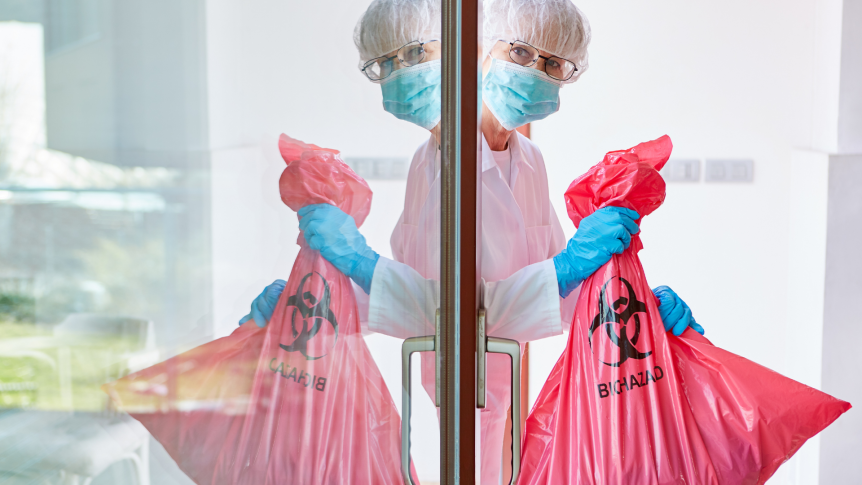By: Outpatient Surgery Magazine, Kaylan Anderson, RN, BSN If you’re looking to bolster your sharps safety efforts, here are some key safety components to keep your surgery center injury-free: Regular Audits Perform a sharps safety audit each quarter to ensure all needle safety and infection prevention policies are being performed correctly and none of your staff become complacent, rush or …
Sharps Disposal Containers in Healthcare Facilities
Provided by: U.S. Food and Drug Administration Sharps disposal containers are made from rigid puncture-resistant plastic or metal with leak-resistant sides and bottom, and a tight-fitting, puncture-resistant lid with an opening to accommodate depositing a sharp but not large enough for a hand to enter. “Sharps” refers to objects with sharp points or edges that can puncture or cut skin, …
Needle Stick Injury: What To Do
Provided By: WebMD Needle stick injuries are a reality for people who regularly use needles, like nurses and lab workers. It also can happen if you handle trash, even if it’s not medical waste. According to the CDC, some 385,000 healthcare workers accidentally stick themselves with needles every year. Your chances of catching a disease from a single needle stick …
How to Dispose of Needles: Safe Practices for Discarding Used and Unused Sharps
Provided By: GoodRX Throwing away syringes, needles, and lancets — commonly called “sharps” — is important to prevent injury. Properly disposing of them can also help you avoid infections from used needles, including hepatitis B (HBV), hepatitis C (HCV), and HIV. Here, we’ll cover some basic facts about how to get rid of sharps — including syringe needle disposal, the …
Safely Using Sharps at Home, at Work, and on Travel
Provided By: FDA Sharps is a medical term for devices with sharp points or edges that can puncture or cut skin. They may be used at home, at work, and while traveling to manage the medical conditions of people or their pets, including allergies, arthritis, cancer, diabetes, hepatitis, HIV/AIDS, infertility, migraines, multiple sclerosis, osteoporosis, blood clotting disorders, and psoriasis. …
How To Safely Remove PPE
Provided By:The CDC There are a variety of ways to safely remove PPE without contaminating your clothing, skin, or mucous membranes with potentially infectious materials. Here is one example. Remove all PPE before exiting the patient room except a respirator, if worn. Remove the respirator after leaving the patient’s room and closing the door. Remove PPE in the following sequence: …
Keeping a Medical Office Clean
Provided By: Medical Bag First impressions say much to a prospective patient, and working in a clean environment is essential for medical staff. Clean waiting rooms, exam rooms, front desks, and bathrooms are important. Keeping germs at bay is prudent. How many patients complain that they don’t like going to the doctor (or hospitals) because they always get sick? In …
Best Way to Get Rid of Used Needles and Other Sharps
Provided By: The U.S. Food & Drug Administration The FDA recommends a two-step process for properly disposing of used needles and other sharps. Step 1: Place all needles and other sharps in a sharps disposal container immediately after they have been used. This will reduce the risk of needle sticks, cuts, and punctures from loose sharps. Sharps disposal containers should …
What is Considered Bio Waste?
Health-care activities protect and restore health and save lives. But what about the waste and by-products they generate? Of the total amount of waste generated by healthcare activities, about 85% is general, non-hazardous waste comparable to domestic waste. The remaining 15% is considered hazardous material that may be infectious, chemical, or radioactive. Types of waste Waste and by-products cover a …
Learn about the types of biohazardous waste containers and bags and how to manage them.
Red Biohazardous Sharps Containers Provided By: UC San Diego Commercial red biohazardous sharps containers are used to collect devices or objects with corners, edges, or projections capable of cutting or piercing the skin or regular waste bags, which have come into contact with biological or recombinant genetic materials. These containers must meet the standards of the United States …
- Page 1 of 2
- 1
- 2

